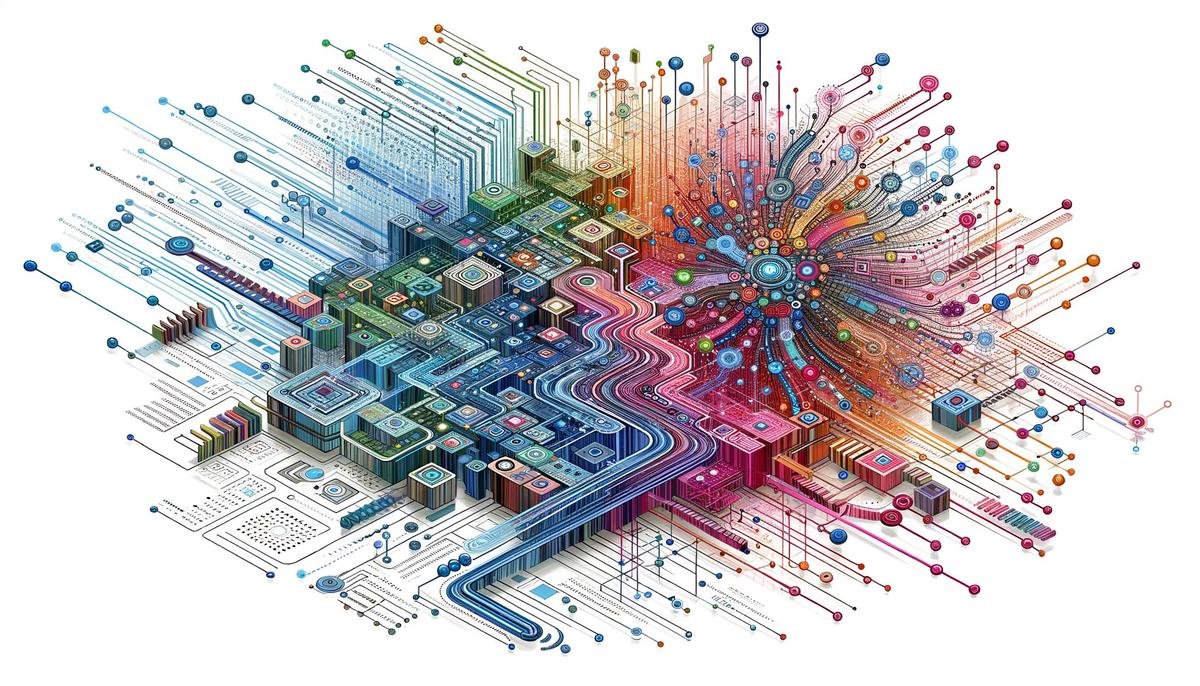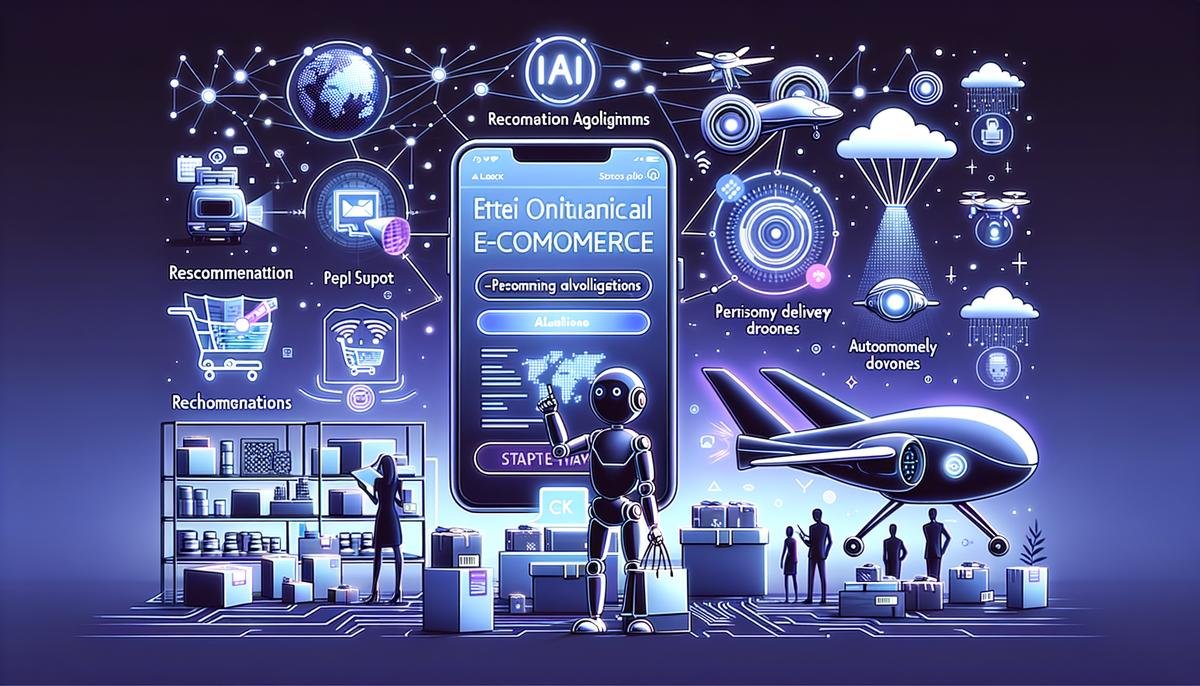Exploring the realm of GrokStyle’s AI technology opens up a world where shopping transcends traditional boundaries, leveraging the power of computer vision and machine learning to redefine our online experiences. This article aims to shed light on how this innovative technology not only understands but also anticipates our needs in a digital marketplace, setting the stage for a discussion on its broader implications for consumer behavior, e-commerce integration, and future retail landscapes.
Understanding GrokStyle’s AI Technology
GrokStyle’s AI is a type of technology that seems like it’s straight out of the future, but it’s here now and changing the way we shop online. At its core, GrokStyle’s AI harnesses the power of computer vision and machine learning to take on a task that sounds simple but is incredibly complex: recognizing products in images and finding matches or similar items in online catalogs.
Now, how does this all work? Let’s break it down.
First off, when you hear “computer vision,” think of it as a way for computers to kind of ‘see’ images and videos, pretty much the way humans do, but with a twist. Computers don’t get distracted or blink; they analyze every detail in a picture, big or small. Machine learning, on the other hand, is like teaching a computer to learn from data. So it gets smarter and more accurate with experience, just like a human learning a new skill.
When we combine these two technologies for GrokStyle’s AI, we get a system that can look at a picture of a couch, for instance, and understand it’s not just any couch but a specific style, color, and size. The trick here lies in the AI’s algorithms – the set of rules or instructions that tell the computer what to do. These algorithms are trained on massive datasets of furniture images. By learning from these past images, the AI gets better at identifying key details in new photos.
Let’s say you snap a photo of a stylish lamp in a magazine, and you want to find one just like it for your home. Once the picture is uploaded, GrokStyle’s AI kicks into action. It scans the image, focusing on attributes like the lamp’s color, shape, and maybe even material. This is no small feat, considering the countless variations these attributes can have. But GrokStyle’s AI isn’t just looking; it’s understanding these details in the context of what it has learned from previous images.
After analyzing these aspects, the AI then sifts through online catalogs to find a match or, at times, several close matches. This process isn’t about looking for exact duplicates but about understanding what makes that lamp unique and finding products that share similar qualities.
Yet, the process isn’t always perfect. Sometimes the matches might not be what you expect. Maybe the algorithm picked up more on the color than the shape you cared about. It’s a complex system doing its best to mimic a fundamentally human task: understanding not just what we see but what we’re actually looking for.
In a nutshell, GrokStyle’s AI does something that feels a bit magical, transforming a simple photo into a gateway to finding and buying products that match our tastes and needs. Through the blend of computer vision and machine learning, backed by powerful algorithms, it offers a glimpse into a future where shopping is more intuitive and tailored than ever before.

The Impact of GrokStyle on Consumer Behavior
GrokStyle’s AI, through its advanced visual recognition capabilities, introduces a novel layer to online shopping that didn’t exist before. With just a photo, consumers are thrown into a seamless and much quicker shopping experience, something entire e-commerce platforms can spend years trying to perfect through user interface improvements alone. This near-instantaneous method of locating and buying products can, without a doubt, reshape customer habits in the digital marketplace.
One of the most apparent shifts could be in how quickly decisions are made. Shopping online often means sifting through pages of products, comparing prices, reading reviews, and then, maybe, hitting the buy button. GrokStyle slices through these steps, presenting what you’re looking for—or close to it—instantly. This could lead to more spontaneous purchases since it decreases the time gap between wanting something and being able to find it. For consumers, this means that impulse buying doesn’t just happen at the checkout line in groceries anymore but can be experienced even while scrolling through their phones at home.
Consumer psychology experts suggest that instant gratification plays a significant role in buying decisions. GrokStyle leans into this by reducing the wait or search time to almost zero. This could mean that consumers are more likely to engage with online retailers who utilize these AI tools, as they offer a more satisfying immediate shopping experience. However, this also raises questions about potential overconsumption or buyers’ remorse in hasty purchasing decisions facilitated by such technology.
Moreover, this streamlined search-and-purchase process might not just alter individual behaviors but could shift the entire landscape of online retail. Shops that integrate similar AI technologies could see increased engagement from consumers who are drawn to the effortless experience. This advantage might create a divide between stores that adopt these advancements and those that don’t, potentially reshaping the competitive dynamics within e-commerce.
Visual search, thanks to GrokStyle’s implementation, redefines the user experience by offering a quicker and arguably more engaging way to shop online. While the immediacy and accuracy of finding products might encourage more spending and frequent visits to e-retail websites, it inevitably brings to light discussions on the wider implications for consumer behavior, including spending habits and the psychological effects of instant gratification in shopping. Through GrokStyle’s lens, shopping online is not just about purchasing from the comfort of your home but entering a new era of digital consumerism where what you see can instantly be yours.

Integration with E-commerce Platforms
Integrating GrokStyle’s AI into e-commerce platforms involves a blend of technical savvy and strategic foresight. For starters, online retailers need to understand that the application programming interface (API) is like the bridge connecting GrokStyle’s AI with their current system. This means they’ll have to work closely with developers to ensure the integration is smooth and doesn’t mess up the shopping experience for users. An essential part of this process involves mapping out how data flows between their platforms and GrokStyle’s AI to ensure seamless communication.
But it’s not just about the technical bit. Online retailers must rethink their user interface design. This is key because the whole point of integrating this AI is to make shopping more intuitive. Imagine a shopper snapping a photo of a chair they like at a café. With GrokStyle’s AI, they could upload this image to the e-commerce site, which then needs to effortlessly guide them to similar products. This means e-commerce sites need to design clear, easy-to-navigate paths from the search bar to the checkout.
Now, there are a few hurdles to keep in mind. First up, not all products are easily recognizable by AI, especially if they’re unique or hand-crafted. There’s also the huge task of constantly updating the product catalog to ensure the AI recognizes new items or versions. Plus, ensuring that shopper’s data and privacy are protected during this whole process is crucial but complex.
Despite these challenges, the benefits can be substantial. For starters, e-commerce platforms might see their conversion rates go up. When shoppers find what they want faster, they’re more likely to buy it. It’s also a boon for customer satisfaction – less time searching means a happier shopping experience.
Let’s talk about the addition of detailed product descriptions and reviews. They play a major role when GrokStyle’s AI fetches similar items for the user. Sites need to ensure that the AI considers these elements while making recommendations, further enhancing the accuracy of search results. Such detailed info helps in building trust and encourages more informed purchasing decisions.
Furthermore, integrating GrokStyle’s AI prompts online retailers to dig deeper into their analytics. They’re able to track which items get searched for the most or identify trends based on user searches. This not only helps in stock management but can also assist in tailoring marketing efforts more effectively.
Lastly, adapting to this technology might encourage a collaborative partnership between e-commerce platforms and manufacturers or suppliers. Sharing data obtained through GrokStyle’s AI could help suppliers understand market demands better, leading to more targeted production and possibly reducing overstock issues.
In conclusion, while the road to integrating GrokStyle’s AI into e-commerce platforms might have a few bumps, navigating them can lead to a revolutionized shopping experience. It involves a blend of addressing technical challenges while keeping an eye towards creating a seamless, enjoyable browsing experience for customers. The payoff comes in the form of increased sales, enhanced customer satisfaction, and ultimately, a competitive edge in the bustling world of online retail.

Case Studies: Success Stories and Challenges
Moving forward to the real-world applications of GrokStyle’s AI, we can see its noticeable footprint across businesses that wanted to bridge the gap between visual desire and tangible product offering. An interesting case study demonstrates the use of GrokStyle’s AI by a high-end furniture retailer. The retailer, observing the changing dynamics of online shopping, integrated GrokStyle’s AI to offer its customers a ‘see it, search it’ purchasing journey. Customers could now simply upload a picture of a furniture piece they admired in any setting, and GrokStyle’s AI would match it with similar products from the retailer’s database. The result was a significant bump in user engagement and sales, with the added benefit of deeper insights into customer preferences.
Yet, the technology was no silver bullet. At first, the furniture retailer faced challenges with mismatched recommendations, primarily due to the unique textures and designs of its high-end furniture line. The retailer worked closely with GrokStyle to refine the AI algorithms, enhancing the database with more varied images and product details. This iterative process gradually improved the accuracy of product matches, illustrating a practical lesson – the necessity of continuous fine-tuning in AI applications.
Another exploration of GrokStyle’s AI comes from a collaborative project between an e-commerce platform specializing in home decor and an interior design magazine. The project allowed readers to find and purchase items featured in magazine spreads quickly. Initially heralded as a fusion of lifestyle inspiration and retail, this endeavor too faced bumps along the road. Specific challenges were around copyright permissions for images, as well as different lighting and angles in photos creating hurdles for the AI. These issues were systematically addressed by establishing clearer protocols on image use and enhancing the AI’s learning on visual variances.
This case exemplifies that while GrokStyle’s AI can transform the online shopping experience, its success depends majorly on backend support, including legal clearances and continuous algorithmic training.
On a different note, a success story emerged from a global chain of retail stores. By utilizing GrokStyle’s AI in its mobile app, the retailer provided an innovative in-store experience – enabling customers to snap photos of products they liked and instantly receive information along with related products or variants. Here, GrokStyle’s AI facilitated cross-selling and enhanced customer satisfaction. The key takeaway was the AI’s imperative need for a diverse dataset to handle the wide range of products a global retailer offers.
Observing these applications uncovers a pivotal theme: GrokStyle’s AI is a powerful tool capable of refining the online and in-store shopping experience, provided that businesses are willing to address initial technological teething problems and maintain an ongoing commitment to improving the underlying AI models. Despite facing certain setbacks, the businesses that stayed the course have authored tales of remarkable success through enhanced customer engagement and sales. This journey highlights that GrokStyle’s AI’s potential seems boundless with the right mixture of patience, adaptation, and collaboration.

Future Prospects of AI Visual Search in Retail
Peering into the foreseeable evolutions in the retail arena, AI visual search technology stands on the cusp of driving profound changes not only within shopping platforms but also in how consumers and businesses interact on a larger scale. As machine learning and AI continue to evolve, the capabilities of visual search technology are expected to expand, leading to more sophisticated and nuanced applications that could further blur the lines between physical and digital shopping experiences.
Future advancements might see AI visual search becoming more intuitive and capable of understanding context and nuance in user queries. Imagine a scenario where a person can snap a photo of a living room and not only find similar-looking furniture but also receive suggestions on complementary décor based on current design trends or even their personal taste preferences. This level of personalization and accuracy could revolutionize how consumers discover and purchase products, moving beyond simple image matching to offering entire lifestyle solutions.
Beyond retail, these technological advances are poised to spill over into inventory management, allowing retailers to utilize visual search capabilities to keep track of stock levels more efficiently by simply scanning a storeroom or warehouse. Such an application could significantly reduce human error, save time, and optimize supply chain operations.
In the broader societal and economic contexts, the widespread adoption of AI visual search could lead to a paradigm shift in employment sectors tied to retail. With enhanced AI capabilities facilitating a more automated and seamless shopping experience, there’s potential for job roles to evolve, focusing more on tech-enhanced customer service, AI system management, and digital merchandising.
One of the most significant impacts of enhanced AI visual search may lie in its ability to democratize shopping experiences globally. Access to products could become more seamless for people living in remote areas or those with disabilities, as AI visual search technology bridges the gap between desire and fulfillment with just a click or a snapshot. This leveling of the playing field can have lasting effects on global consumption patterns, drawing more consumers into the digital shopping world.
However, the journey towards these future advancements is not without challenges. As AI visual search becomes more ingrained in daily activities, concerns around data privacy, the digital divide, and the exacerbation of consumerism could pose ethical dilemmas and call for thoughtful discourse on technology’s role in society.
In summary, while it’s still early days for predicting all the ramifications of AI visual search in the retail sector and beyond, what’s evident is its potential to transform not just how we shop but also how businesses operate and how economies function. As machine learning algorithms grow smarter and more specialized, the possibilities seem almost limitless, inviting both excitement and caution in equal measure.

As we stand at the precipice of technological advancements with AI visual search, it’s clear that GrokStyle’s AI is not just an enhancement to our current shopping experience but a harbinger of transformative changes in retail and beyond. The potential for this technology to personalize shopping, streamline inventory management, and democratize access across global markets speaks volumes about its role in shaping future consumption patterns. While challenges remain, embracing these innovations could lead us into an era where the convenience and personalization offered by AI visual search become integral to our daily lives.




